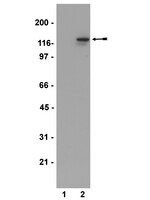In vitro differentiation of human adipose tissue-derived stem cells into cells with pancreatic phenotype by regenerating pancreas extract.
Jiyeon Lee,Duck-Jong Han,Song-Cheol Kim
Biochemical and biophysical research communications
375
2008
Show Abstract
Pancreas extract from regenerating pancreas after partial pancreatectomy is known to contain factors that induce islet neogenesis in animals with streptozotocin (STZ)-induced diabetes [A.A. Hardikar, R.R. Bhonde, Modulating experimental diabetes by treatment with cytosolic extract from the regenerating pancreas, Diabetes Res. Clin. Pract. 46 (1999) 203-211]. In this study, we evaluate the effects of regenerating pancreas extract (RPE) from 90% partially pancreatectomized rats on induction of pancreatic differentiation of human adipose tissue-derived stem cells (hASCs). We found that undifferentiated hASCs expressed OCT-3/4, Nanog, and REX-1, markers of embryonic stem cells (ESCs). Genes involved in early pancreas development showed increased expression in RPE-treated culture. Sox17 and IPF-1 were expressed only in RPE-treated culture. Immunocytochemical analysis showed C-peptide-positive cells in RPE-treated culture but not in undifferentiated hASCs. In conclusion, hASCs have the characteristics of ESCs and the potential to differentiate into pancreas cell lineages phenotypically in response to RPE. | | 18725201
 |









